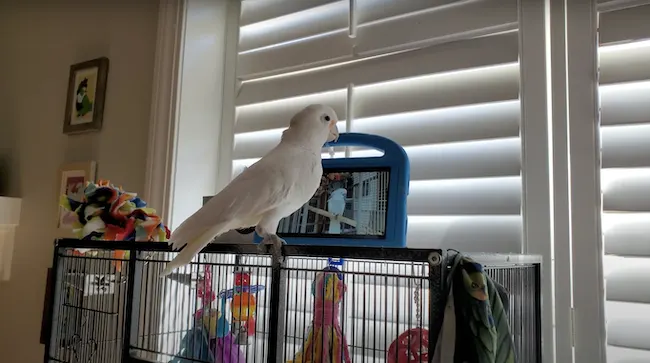A study says that pet birds might like live calls with each other more than watching videos that have already been made.
Sociality is something that comes naturally to parrots. The fact that they are kept in captivity, where they often do not have a flock with whom to engage, can provide some significant problems to maintaining their happiness and health. New research, on the other hand, suggests that technology might be able to assist individuals in satisfying a greater number of their social demands. Researchers from the University of Glasgow and Northeastern University conducted a new study that was relatively tiny in size. The study examined the behavior of parrots when they were given the choice to video chat with other birds through Meta’s Messenger as opposed to watching films that had been pre-recorded. It would appear that they have a penchant for talks that take place in real time.
This research draws on the findings of a number of smaller studies that have been conducted over the course of the past several years. One of these studies was conducted by the team, in which they taught pet parrots to make video calls to each other (with the assistance of humans), and another study was conducted in which they were taught to play tablet games. In the most recent study, nine owners of parrots were provided with tablets to administer to their pets, and the critters were then monitored for a period of six months. Over the course of that period of time, the parrots, who had initially been introduced to one another through the medium of video chat, were able to engage in calls with one another that might last for up to three hours apiece and were spread out over a total of twelve sessions. The first half of these sessions consisted of pre-recorded videos, while the other half consisted of live video chats conducted over Messenger.
It was noted by their caregivers, who had recorded the sessions, that the birds appeared to be more engaged during the live conversations. In those situations, they were the ones who began more calls, and they spent an average amount of time interacting with the birds who were on the other end.
When the parrots were allowed to make up to two calls during each session, the researchers discovered that those who were conversing using Messenger reached this limit 46 percent of the time. This was in contrast to the situation in which they were watching pre-recorded videos, when they only reached this limit almost half of the time. They spent a total of 561 minutes video-chatting on Messenger, which is significantly longer than the 142 minutes they spent watching the films that were pre-recorded.
It was said by Dr. Ilyena Hirskyj-Douglas that “the appearance of ‘liveness’ really did seem to make a difference to the parrots’ engagement with their screens.” However, she also mentioned that additional research would be required before conclusive findings could be drawn. “Their behavior while interacting with another live bird frequently reflected behaviors they would engage in with other parrots in real life, which was not the case in the pre-recorded sessions,” the researcher said. In spite of this, the majority of the caregivers noted that both the live and pre-recorded calls appeared to have a beneficial effect on the birds.
“The internet holds a great deal of potential for giving animals agency to interact with each other in new ways,” said Dr. Hirskyj-Douglas. “However, the systems that we build to assist them in doing so need to be designed around their specific needs as well as their physical and mental capabilities.” It is possible that studies such as this one could contribute to the establishment of a truly animal-centered internet.

